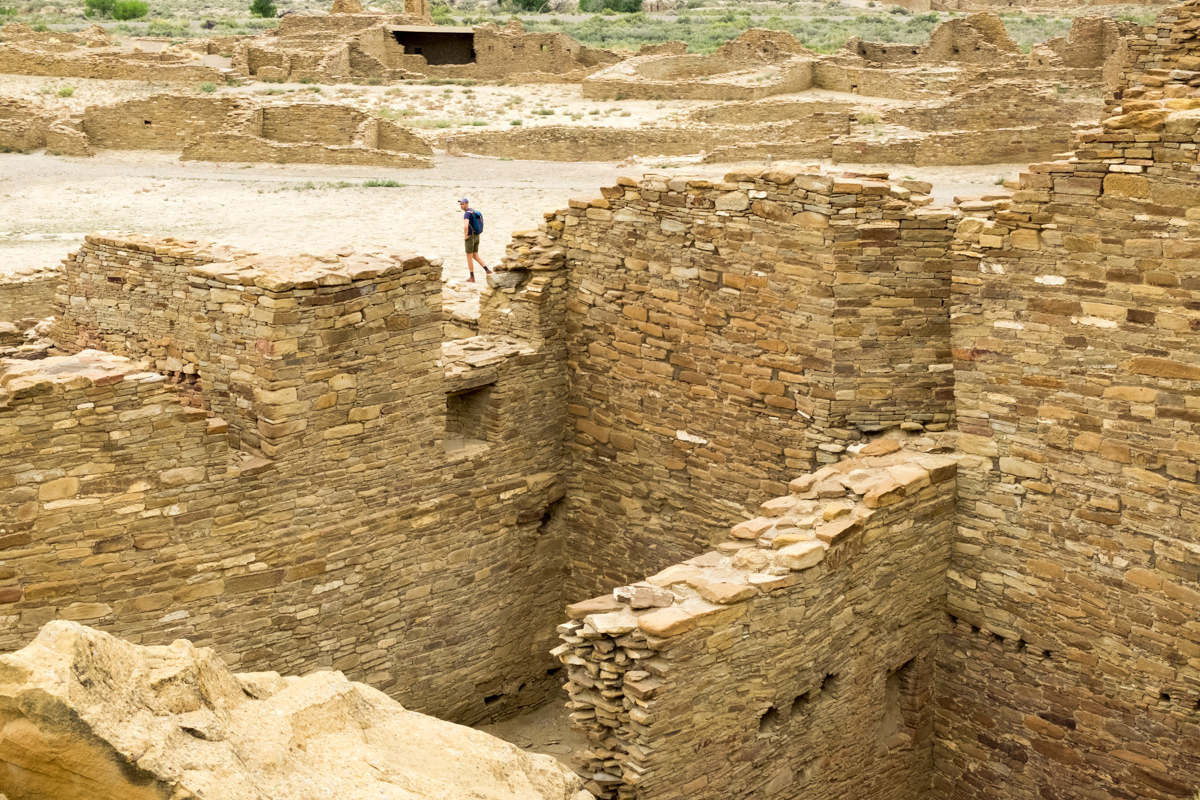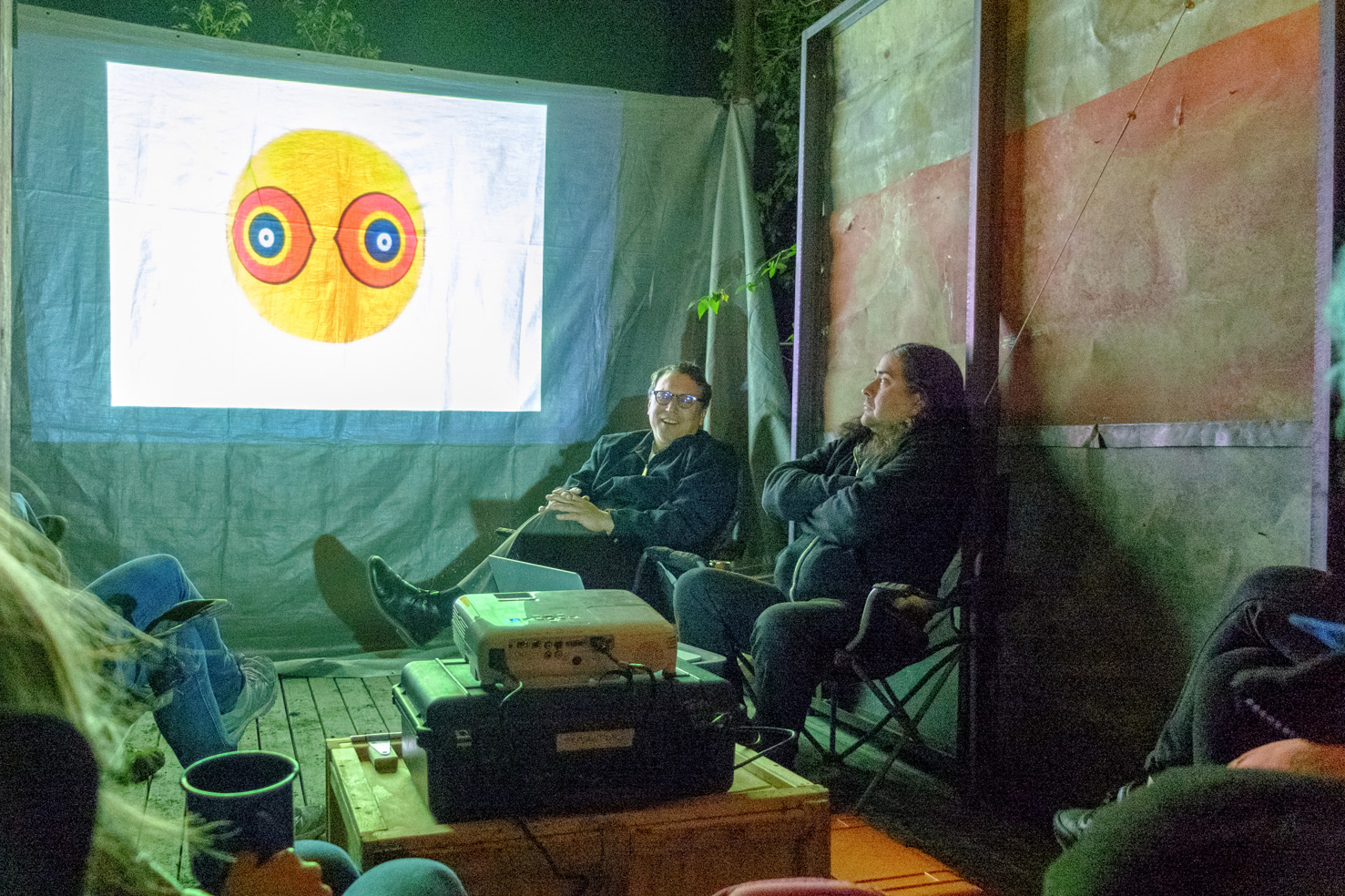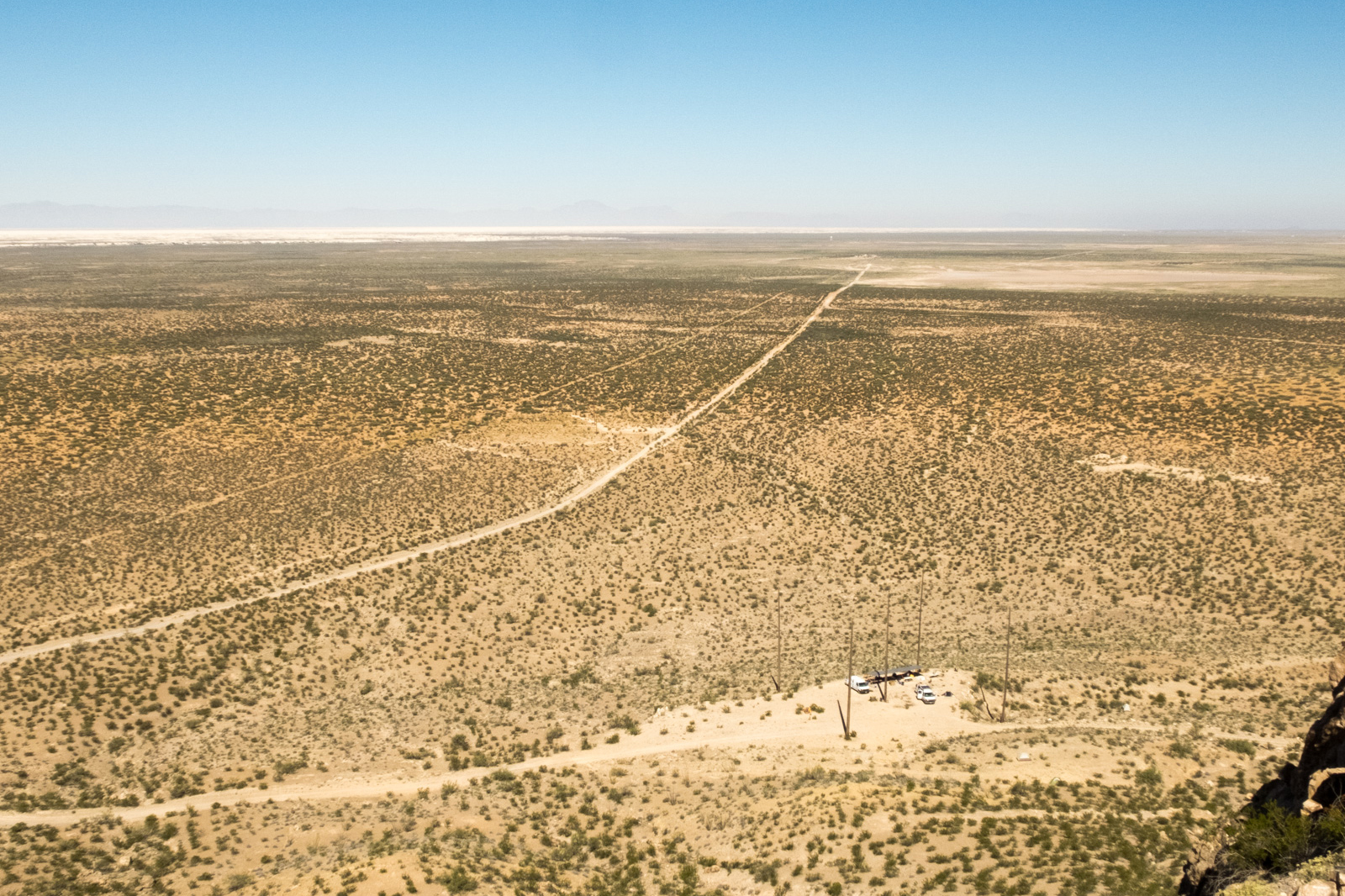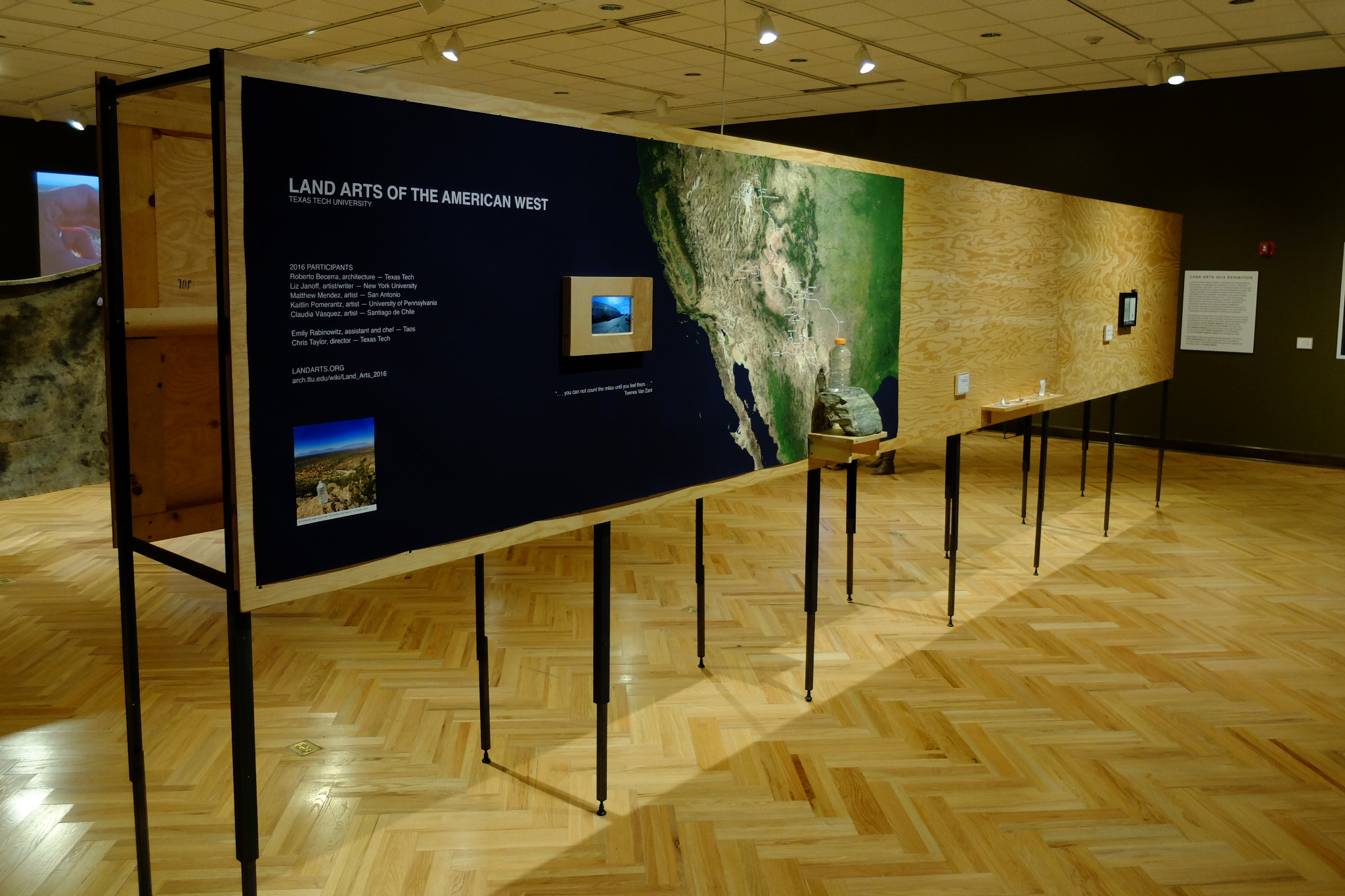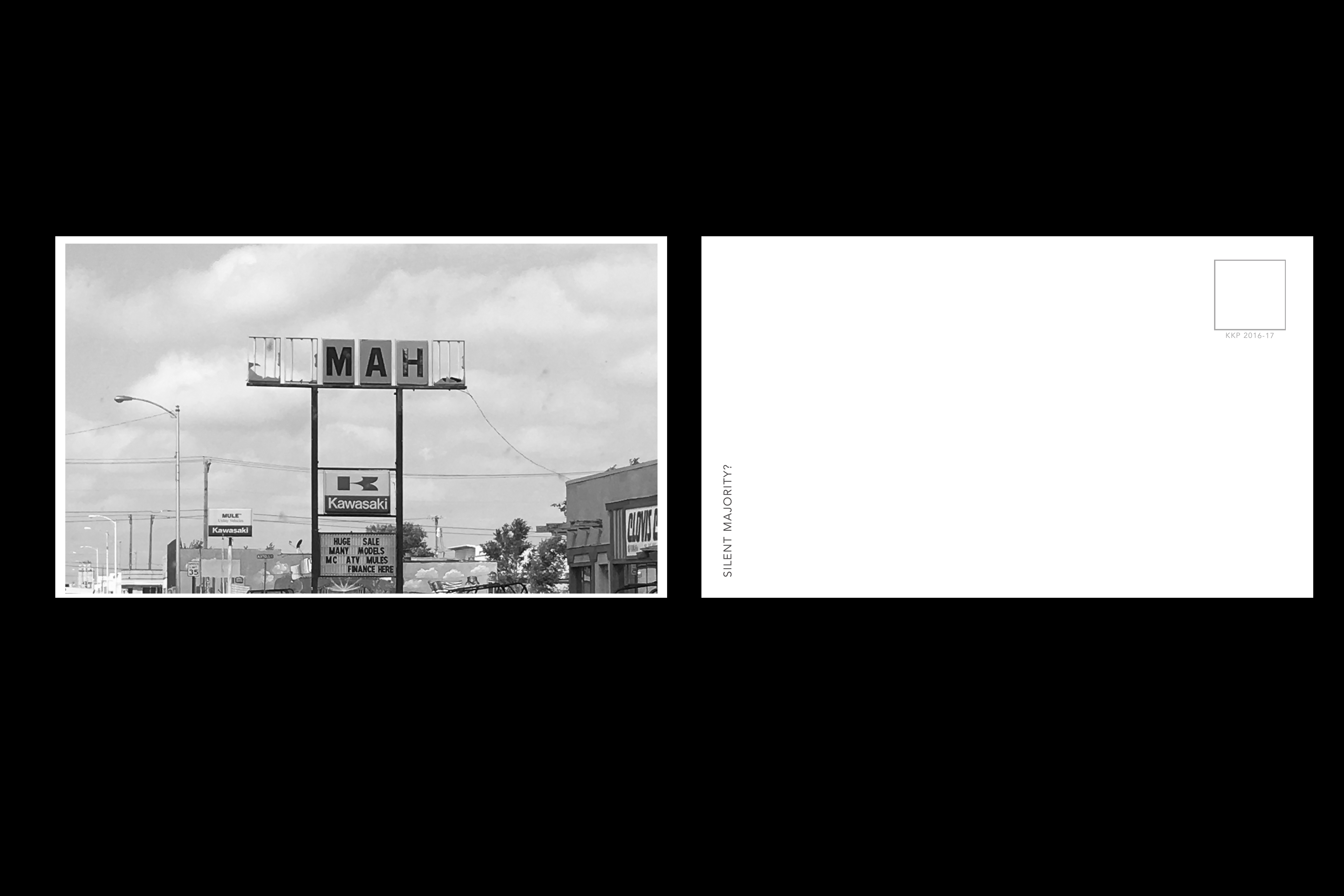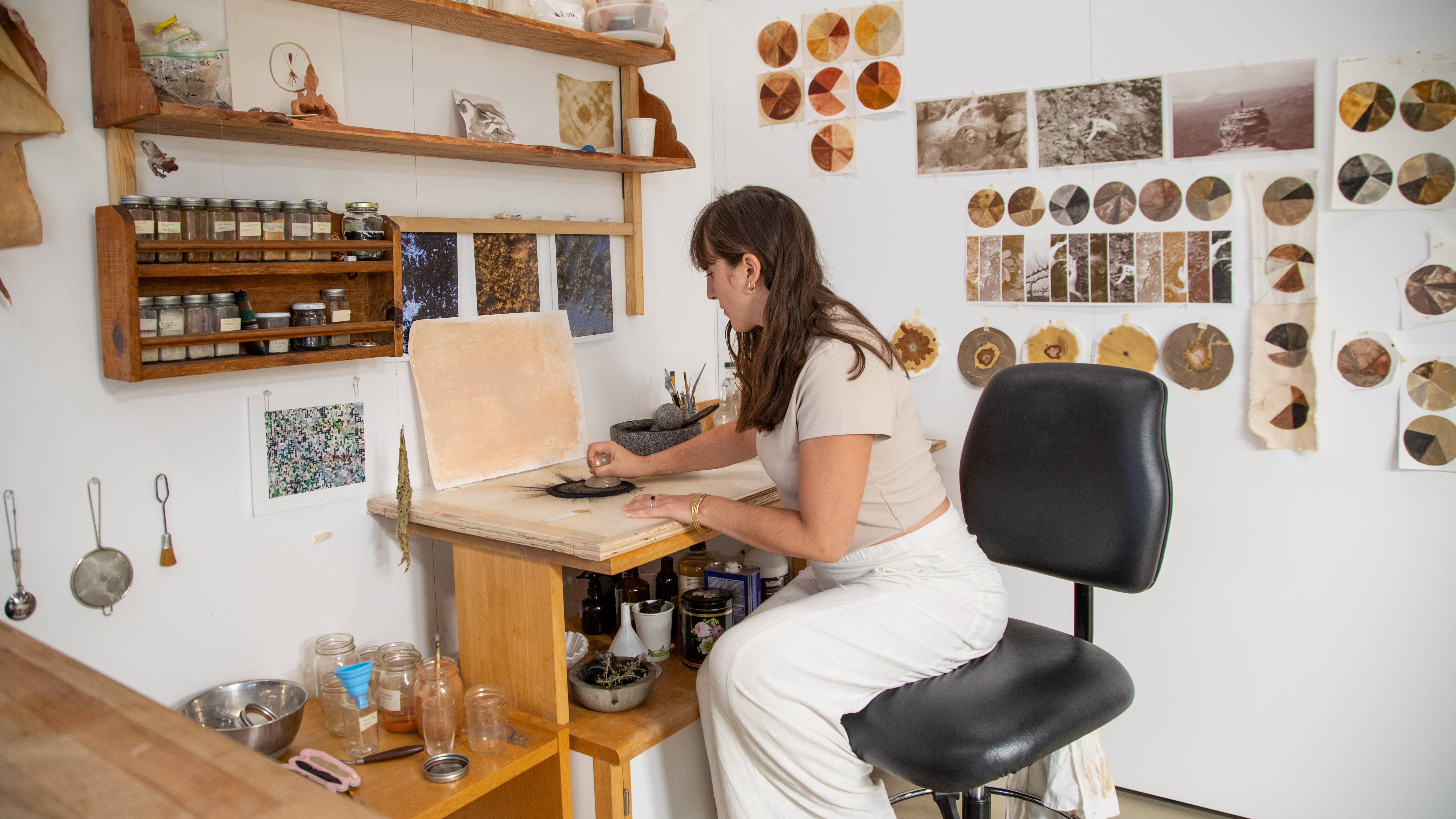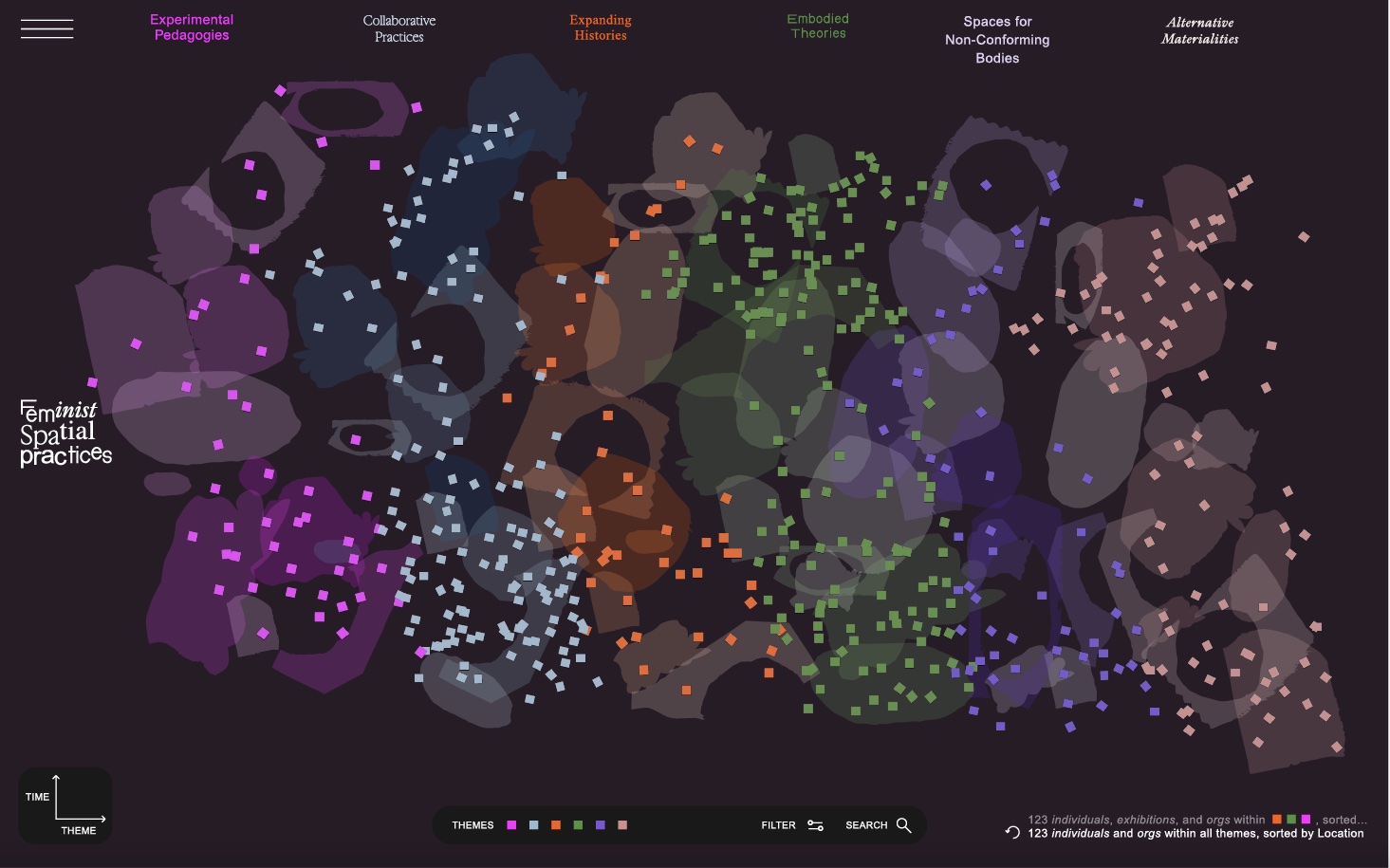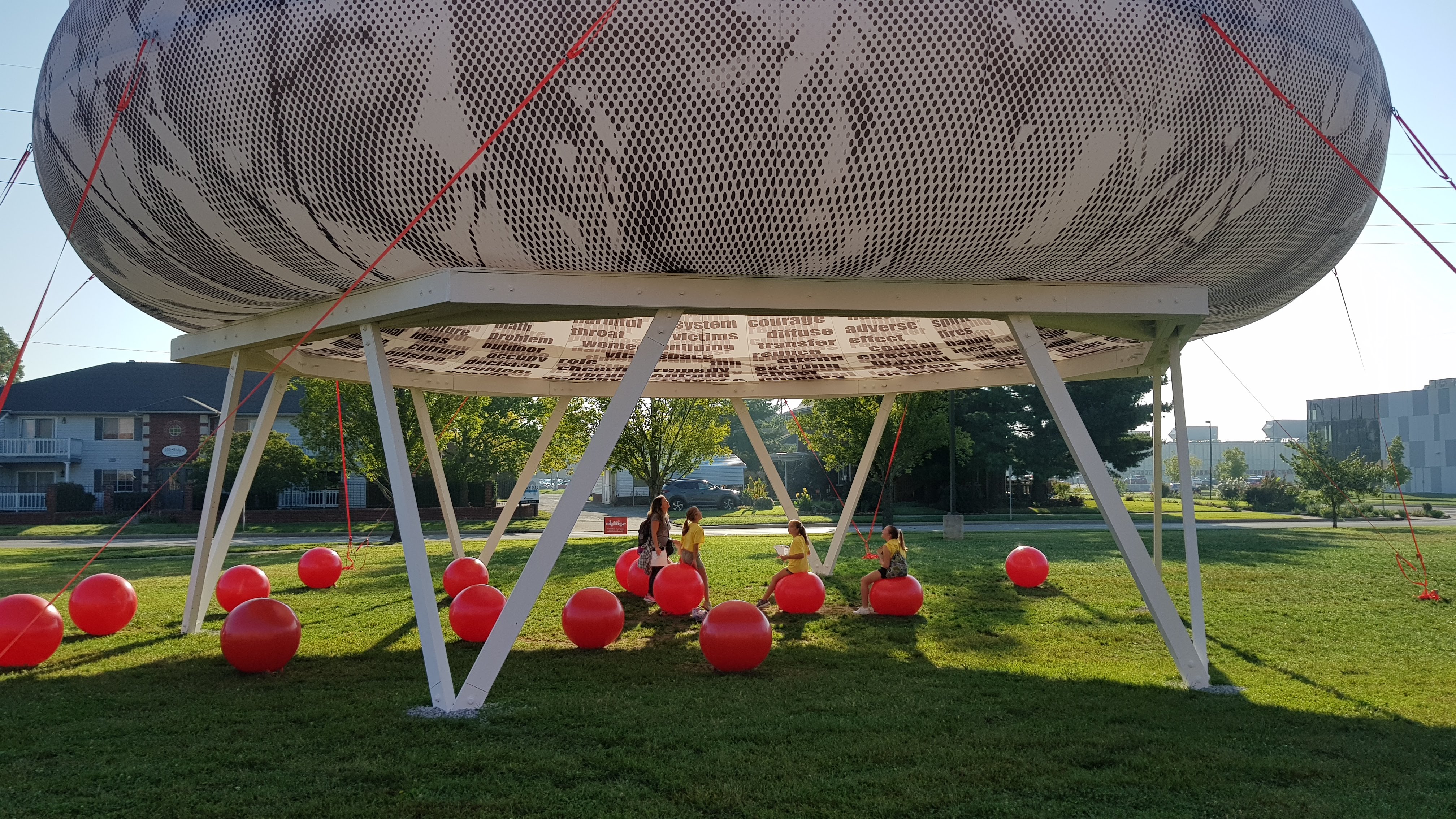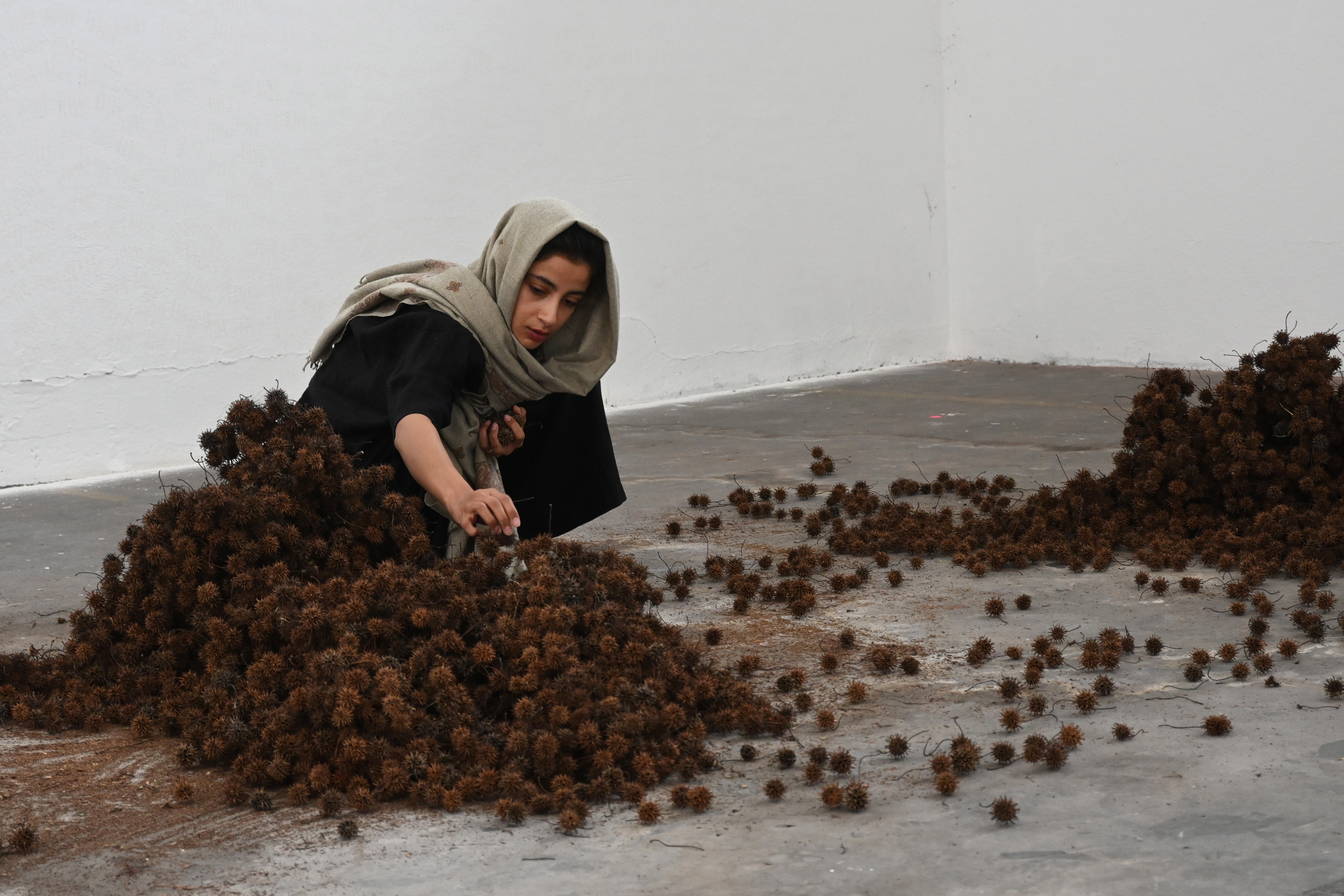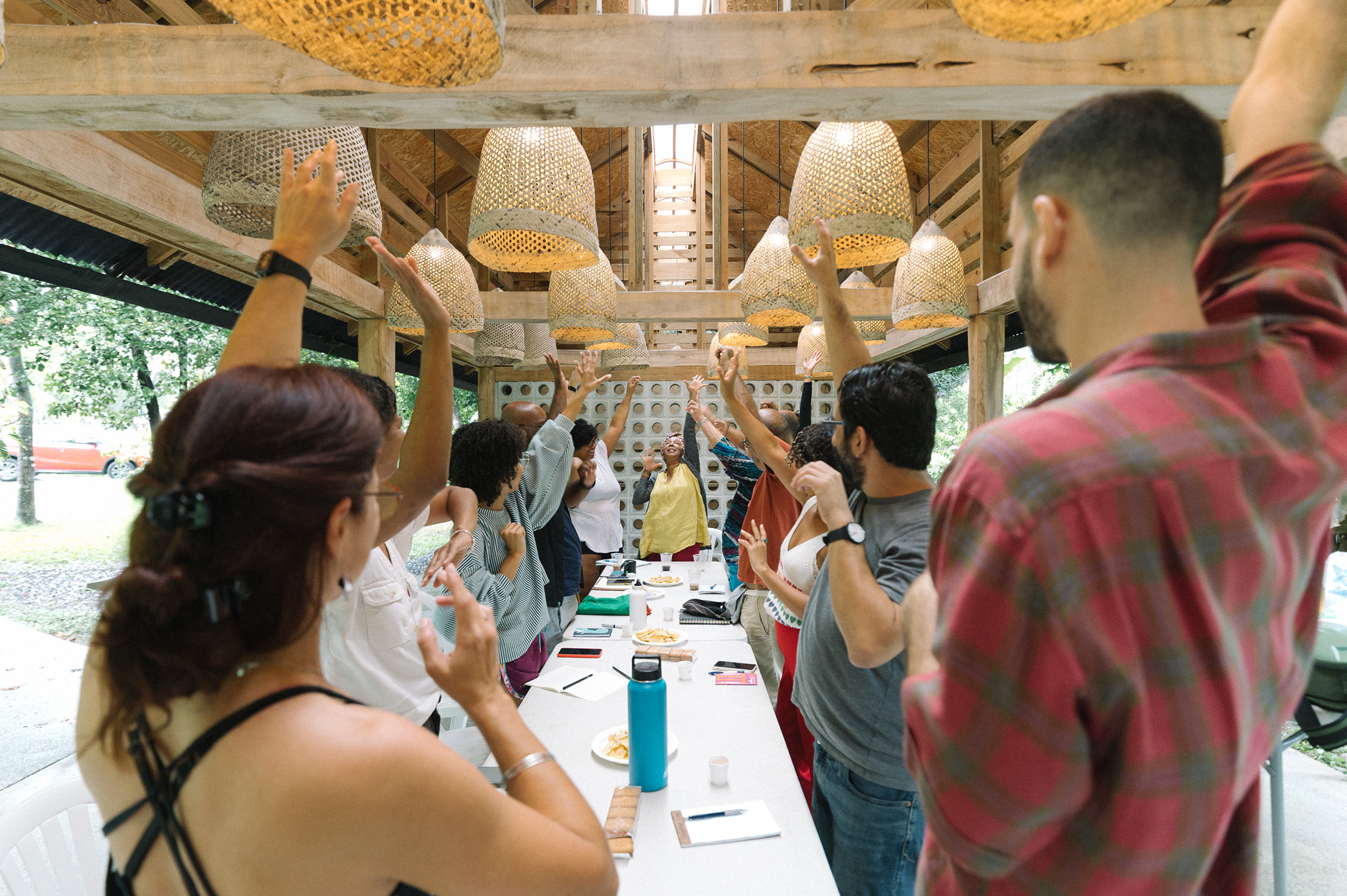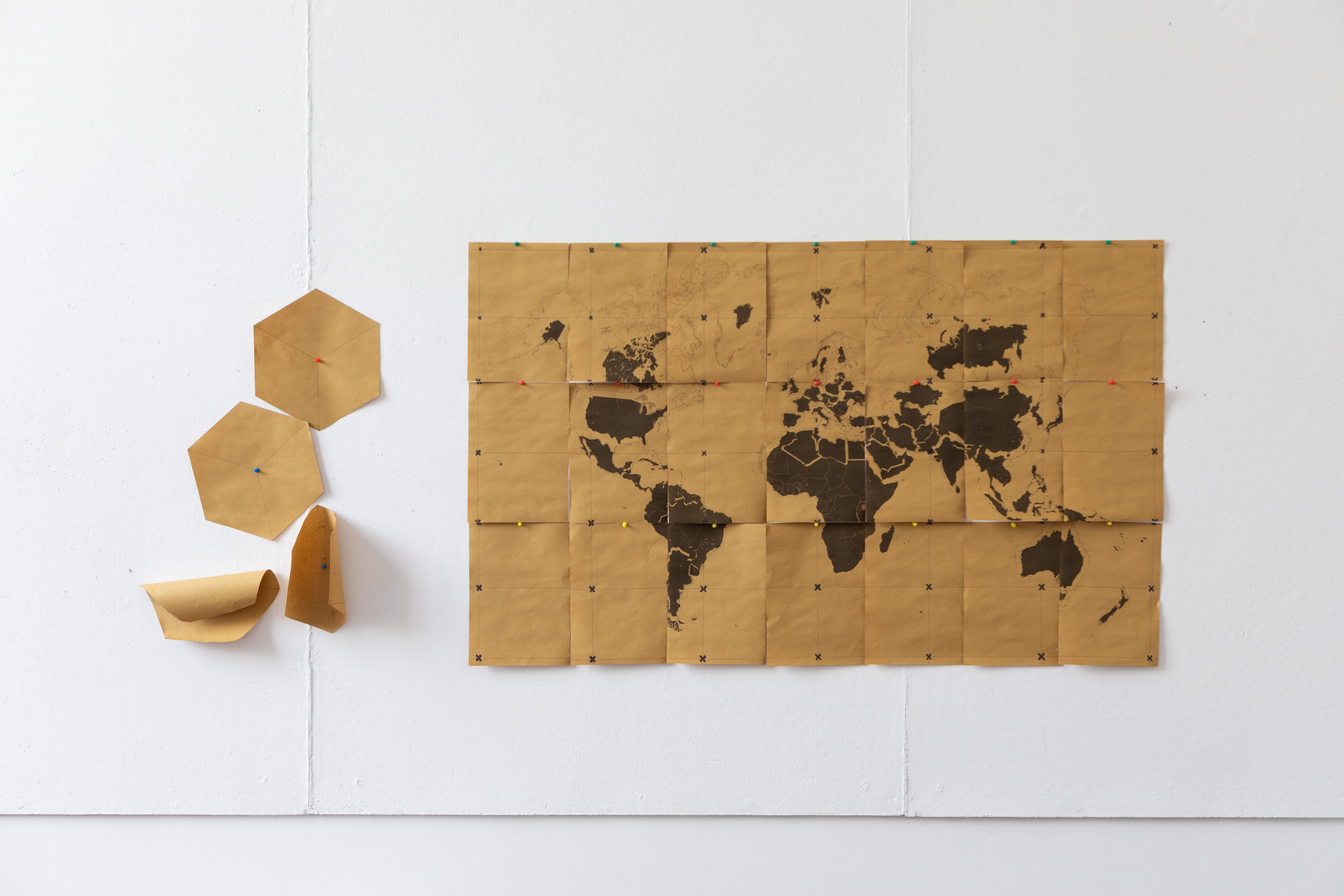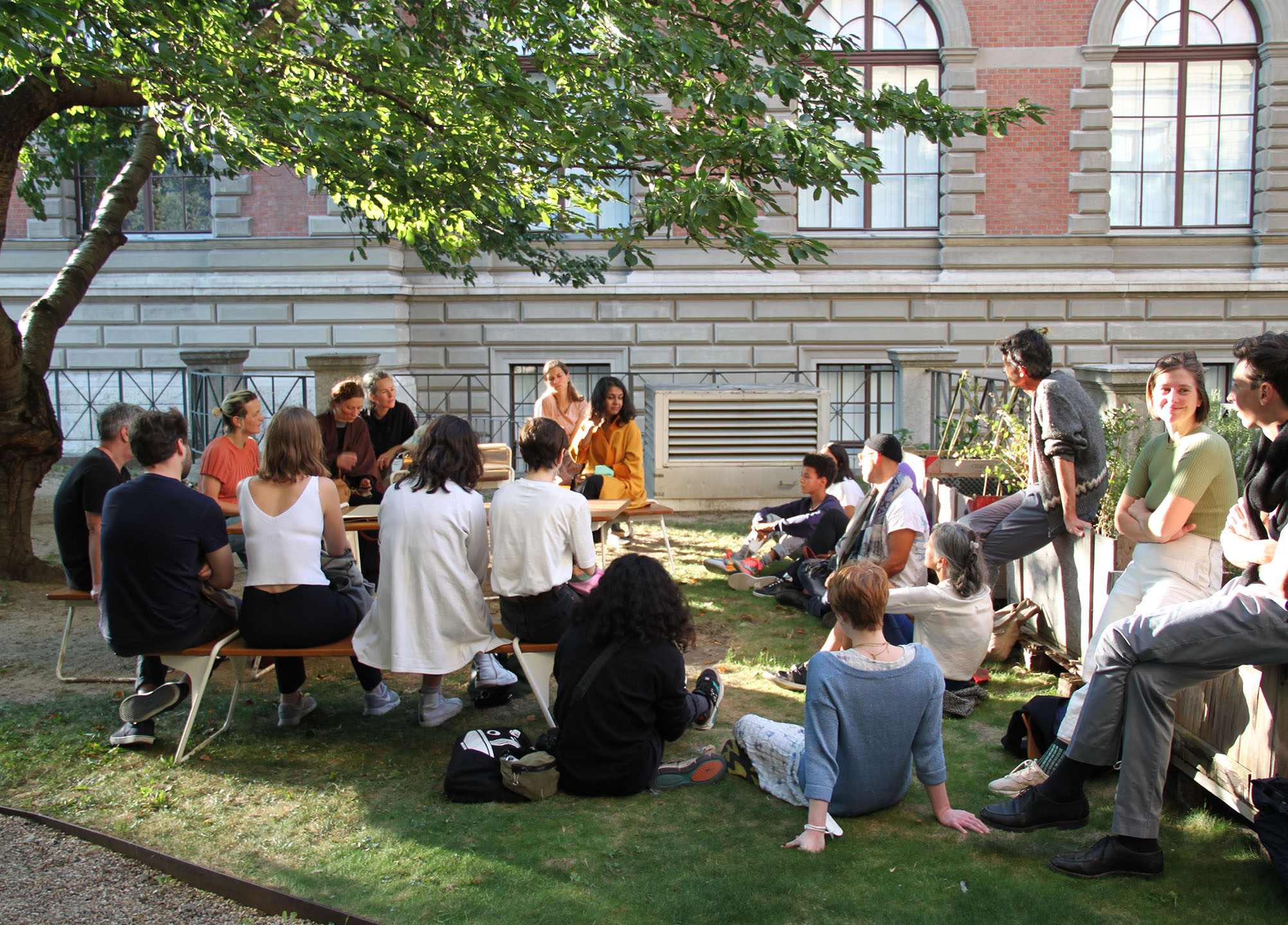https://landarts.org
In the Oquirrh Mountains about thirty miles southwest of Salt Lake City, Utah, there is a hole three miles wide and four-fifths of a mile deep. This is Bingham Canyon Mine, an open-pit copper mine first excavated in 1848 that now produces nearly one percent of the world’s copper supply, making possible almost everything from the penny to the American home. In 2017, the mine boasts of being the largest man-made excavation on the planet. On a clear day, it is visible from the International Space Station, 240 miles above. Back on the ground, the mine can be seen from a visitor’s center at the pit’s edge and in the documentary Through the Repellent Fence: A Land Art Film, which premiered last February at the Museum of Modern Art. The film, directed by Sam Wainwright Douglas, includes footage of a group of artists, architects, and historians—not miners or Utahan tourists—at the Bingham Canyon Mine to investigate the site as part of an unusual program, Land Arts of the American West.
Now in its fifteenth year, or “field season,” Land Arts of the American West assembles up to ten students for a three-month program surveying works from the land art movement of the 1960s and ’70s, modern military and industrial installations, and neolithic sites. Visits are supplemented by lectures, seminars, and texts. Chris Taylor, director of the Land Arts program and a professor of architecture at Texas Tech University, uses an intentionally broad definition of “land art,” describing it as “anything people do in the landscape.” For Taylor, Nancy Holt’s Sun Tunnels, Michael Heizer’s Double Negative, the Very Large Array radio astronomy observatory in central New Mexico, the Wendover Airfield in western Utah, and the pre-Columbian ruins of the Chaco Cultural National Historic Park carry equal importance and opportunity for meaning. And while the Bingham Canyon Mine and Robert Smithson’s Spiral Jetty originated in radically different contexts, the program’s approach to them is similar.
“There’s the kind of iconic earthworks that can bring us out there made by Nancy Holt, Robert Smithson, Michael Heizer—that crowd. But as you travel through the territory, you’ll quickly realize that the history goes much deeper,” Taylor says. “Connecting to the archaeology drives home the reality that people have been manipulating and working in the landscape as long as we’ve been roaming the planet, so there’s a deep human sensibility in our relationship to place, to the ground, to the land.”
The Land Arts pedagogy emerged from a dialogue between Chris Taylor and the artist Bill Gilbert, who began a similar semester-long program housed in the Art & Ecology Master of Fine Arts program at the University of New Mexico in Albuquerque, also called “Land Arts of the American West,” which is now directed by Jeanette Hart-Mann. Bringing together their backgrounds in art, architecture, and design, Taylor and Gilbert established the Land Arts program jointly in 2001 and separately in 2008. (Taylor and his Land Arts of the American West decamped to Lubbock, Texas and Texas Tech University in 2008.) Though the two programs share a lineage, they are now, as Taylor explains, “operationally and even pedagogically very distinct,” with the UNM program tied to requirements for a master’s degree, unlike its Texas Tech cousin.
That Taylor’s Land Arts of the American West operates outside the structure of a master’s program is certainly part of its appeal, along with its emphasis on interdisciplinary practice and the opportunity for its students to escape the white cubes of the studio and the library. The program seems to shape-shift between a traveling artists’ residency, a university study abroad program—Taylor likes to call it “a semester abroad in our own backyard”—and a collaborative artist’s project. “Land Arts is a point of contact in someone’s educational trajectory that launches them into other things. It’s very different than being in an architecture studio program or a painting studio program with people part of a similar conversation trying to refine their craft relative to each other––we’re able to maintain a broad perspective,” Taylor explains. The expectation is that students in the program make a body of work, but what form that works takes is ultimately open-ended.
While the Land Arts’s itinerary changes each year, the structure remains the same: two journeys during the course of two months in the field, followed by one month in Lubbock. “The field” is an expansive one, covering West Texas, New Mexico, Utah, Nevada, and Arizona. Students, Taylor, and one program assistant crisscross the Southwest in vans equipped with solar panels, setting up camp in remote desert locations and working on self-directed projects. At stops along their route, they meet with a number of guest lecturers—which also changes each field season—including, most recently, Ann Reynolds, associate professor of art and art history at the University of Texas at Austin and author of Robert Smithson: Learning from New Jersey and Elsewhere; Raven Chacon, Cristóbal Martínez, and Kade L. Twist, members of the artist collective Postcommodity; Matt Coolidge, director of the Center of Land Use Interpretation; Gretchen Dietrich, director of the Utah Museum of Fine Arts; and art critic and curator Lucy Lippard, who writes of the Land Arts programs in her 2014 book Undermining: A Wild Ride Through Art in the Changing West:
"The Land Arts of the American West programs at the University of New Mexico and Texas Tech, led by artists Bill Gilbert and Chris Taylor, offer students a temporary nomadism, a rugged art-making intensive, and a chance to consider not only art and non-art but also “forms of travel as different measurers of the landscape,” as Chris Taylor has put it. They explore old and new ideas in increasingly contextualized frameworks, stretching the initial tenets of land art with pop culture humor and new technology, inaugurating a whole new field—institutionalized student tourism. [footnote Lucy R. Lippard, Undermining: A Wild Ride Through Land Use, Politics, and Art in the Changing West (New York and London: The New Press, 2014), 92.]
“Tourism” serves as an incomplete (but not entirely inaccurate) description of the program. If Land Arts of the American West can appear to outsiders as an exotic camping trip or remote art sightseeing excursion, it counters that misperception by providing students an opportunity to research and inhabit landscapes in the United States that are difficult to access and interpret, and introduces them to a network of individuals, organizations, and institutions actively studying forms of land use in the West and along the US-Mexico border. The granularity of detail experienced firsthand from a site visit to Spiral Jetty, for example, within the context of the program’s comprehensive itinerary and syllabus outdoes any cross-country drive, even one undertaken by the most dedicated art enthusiasts.
Though of course, as with any long road trip, it is nearly impossible for creatively driven individuals to cross the American Southwest on four wheels without accumulating interesting material and documentation useful to an artistic or academic practice. As Lippard writes in the essay “Peripheral Vision” for Land Arts of the American West, a 2009 collection of texts and interviews published by UT-Austin, “Artists and art types in the Western landscape, even those who live here, are aesthetic tourists who might as well admit it and become the kind of active participants who see close up as well as vista-wide.” [footnote Lucy R. Lippard, “Peripheral Vision,” Land Arts of the American West (Austin: University of Texas Press, 2009), 338.] The students’ guidelines are deliberately loose, and the program requires a high degree of commitment, responsibility, and curiosity from the participants (as in a traditional residency program) to make the most of their time and research beyond the itinerary.
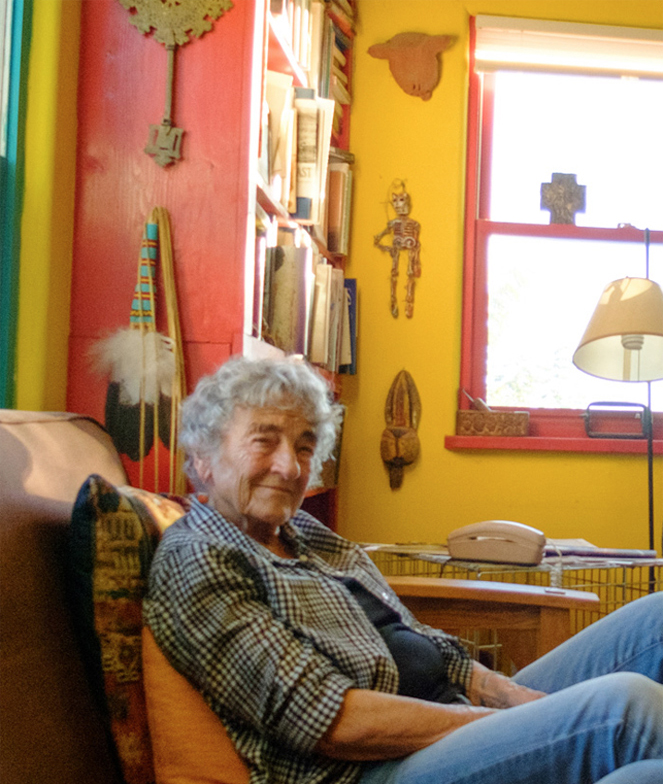
Lucy Lippard talking to the Land Arts program about her work. Galisteo, New Mexico, 7 October 2016. Photograph by Chris Taylor.
Land Arts is supported by a small annual budget of about $45,000, though Taylor has been successful in garnering funding that allows him to offer modest scholarships and enable students from outside Texas to receive in-state tuition. In addition, students pay a $3,000 program fee, which covers food, fuel, and accommodations, and can expect additional personal expenses for gear suitable for a range of desert environments. The ability to attract students—mostly recent graduates of master’s and bachelor’s programs––from across the United States as well as from within Texas Tech plays a significant role in promoting an interdisciplinary framework, attracting artists and researchers from different fields, including visual art, poetry, art history, and architecture.
From 2002 to 2007, Land Arts of the American West ran as a pilot program out of UT-Austin and UNM funded in part by the Santa Fe-based Lannan Foundation. In the very beginning, Taylor says, “Land Arts ran as an idea. After that first field season, the conversation that evolved between Bill and I was about the relationship between art and architecture and connecting the monumental land art sites with the historic sites, and to the landscape in general.” To do so necessitated “a broader, more interdisciplinary view” of an existing model of art education that focused on cultivating a rigorous studio practice within students. The aim of the program is not to create a new generation of “land artists”; Taylor says in Through the Repellent Fence, “For me the most important work they’re going to make is the work that’s ten years out.”
In the field, students stop at two distinct types of locations as they progress through the landscape and the syllabus. One is characterized more literally as “interpretive sites,” where students interpret and respond to a marker in the landscape, a monument, an archeological site, or an artwork. The other is “work sites,” where there may not be a singular phenomenon to consider. At work sites, students instead focus on reflection—whether through visual or written forms, or a different way entirely—spending three to four days immersed in a particular environment, such as the forests of the North Rim of the Grand Canyon or the Chiricahua Mountains. “We move across the country in two-day, three-day, and four-day stops,” Taylor explains. “We also visit a large diversity of landscapes, which show that the desert is not all Wile E. Coyote and a swarm of cactus, but also made up of alpine forests and salt flats, and the extremes of this diversity are really significant.”
The official description of Land Arts of the American West is “a field program investigating the intersection of geomorphology and human construction.” This broad scope situates the program’s practices within the field of “land art,” that as a category, as Bill Gilbert has written, has shifted its focus more towards “land use,” reflecting “in part an increasing interest in an interdisciplinary approach in which art ceases to function as a discrete practice based on making new interventions in the land to one based on research that then presents information about existing land use.” [footnote Bill Gilbert, introduction to Land/Art New Mexico, by William Fox, Lucy R. Lippard, Nancy Mithlo, and Malin Wilson Powell (Santa Fe: Radius Books, 2010).] According to Taylor, the purpose of the program is not to extract the land art movement from its art historical context but to connect that history to the issues, places, people, and history of the West as they exist in the twenty-first century. “We’re using our focused vision, as well as our peripheral vision,” Taylor says. “If we’re going to study the landscape, we can’t just study the monument. It’s not productive to pick these things out of their contexts, we have to take in the entire frame.”
Since 2003, the Land Arts program has worked with Matt Coolidge, the director of the Center of Land Use Interpretation (CLUI), which operates primarily out of Los Angeles and Wendover, Utah. The center’s projects connect with Taylor and Gilbert’s personal interests and to the interdisciplinary framework that was instituted by their respective Land Arts programs. Founded by Coolidge in 1993, CLUI created an online land-use database accompanied by programming that documents “unusual and exemplary land use in the United States,” including, for example, an exhibition on solar-powered electrical plants, another on uranium deposits, and one on office trailer parks in Los Angeles. “CLUI’s work,” Lucy Lippard writes in Undermining, “is subversively critical” and “about the U.S.A. They ask, ‘Who are we? How does our landscape, built and altered by our society, harbor meaning about us, collectively, and even individually?’” [footnote Lucy R. Lippard, Undermining: A Wild Ride Through Land Use, Politics, and Art in the Changing West (New York and London: The New Press, 2014), 29.]
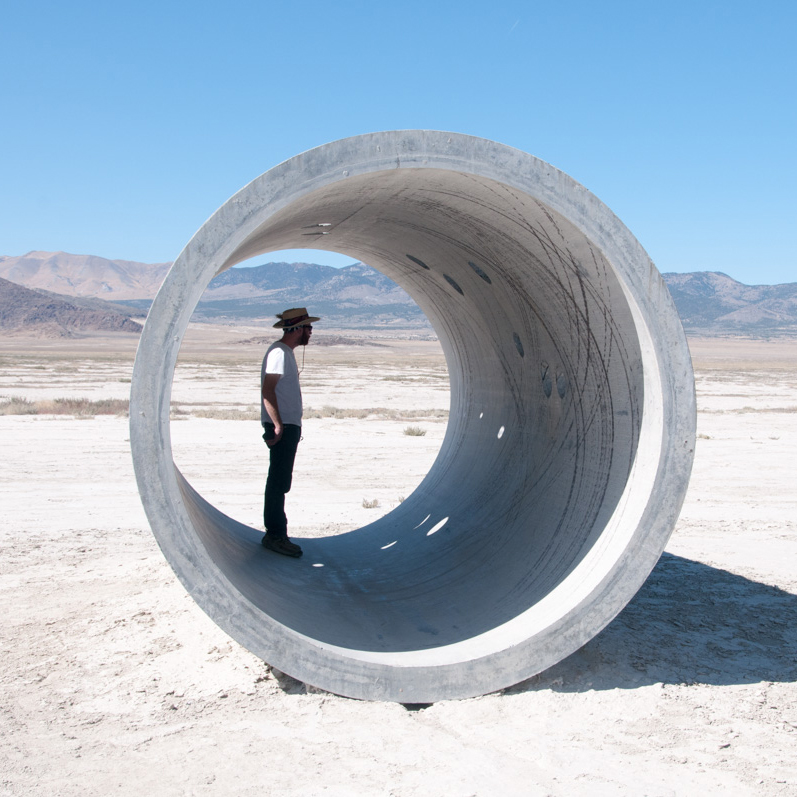
Sun Tunnels, Nancy Holt, 1976, Lucin, Utah, 7 September 2015. Photograph by Chris Taylor.
During each field season, Land Arts students spend five to seven days at a CLUI facility located on the former Wendover Air Base, known today as the Wendover Airfield. Situated on the Utah-Nevada border at the western edge of the Bonneville Salt Flats and about one hundred miles south of Nancy Holt’s Sun Tunnels, Wendover encapsulates many of the West’s extremes—natural beauty and expansiveness certainly, but also profound isolation and the surrender of huge swaths of land to military and industrial superstructures. Within the Land Arts itinerary, Wendover is the site where many of the program’s initiatives intersect, as illustrated by the overlay of land uses, from CLUI’s operations to the US military’s. In an interview with Taylor and Gilbert in the 2009 Land Arts of the American West collection, Coolidge explains that Wendover, “in a sense, attracts things you don’t want in your backyard, that nobody wants in their backyard”—things like rocket production and testing, or nuclear weapons testing and disposal, which still goes on there. [footnote Matthew Coolidge, “Out There with the Center for Land Use Interpretation,” Land Arts of the American West (Austin: University of Texas Press, 2009), 202–13.]
From CLUI Wendover in Utah, where Mormonism still informs laws restricting the sale of alcohol to adults of-age, one can see across the state border to the strip of casinos in West Wendover, Nevada, a line on a map lit up in neon. Students camp beside the Enola Gay Hangar, in which “Little Boy,” the atomic bomb dropped on Hiroshima at the end of World War II, was developed. In Wendover, the students are witnesses to major military, industrial, and cultural imprints left on the land, as well as to the unusual geological phenomena created by the Great Salt Lake. Within the program’s criteria of “investigating through making,” students are also able to work on the site as guest artists, making use of the CLUI studio materials and facilities––a woodshop, a small library, and an open studio space––and learn from past artists-in-residence projects on view in the CLUI Wendover exhibition spaces.
“I was initially drawn to the center for its willingness to look very expansively at projects and the history of things in the landscape,” Taylor says. “The center has been very generous in allowing us to use their facilities in Wendover and I believe it’s very productive for them to see us out there in that landscape, unpacking it, and working with it. The goal of that facility was to make that landscape available for people to work in. We do that. In keeping this wide frame, the center’s sensibilities, through direct connection or osmosis, impacted my vision of the Land Arts program.”
As a participant in the 2016 Land Arts field season, I went the full course, covering more than six thousand miles across the Southwest, arriving in November in Lubbock, a city in the Texas Panhandle surrounded by cotton farms and oil fields, for a month of writing and reflection. At Texas Tech, Land Arts participants are given studio space and meet with guest lecturers and faculty in the College of Architecture in preparation for an exhibition of their work during the university’s spring semester. While the participants in my session were evenly divided between primarily field- and studio-based practices, we all wrestled with “the return.” The experience of leaving the field is so integral to the Land Arts program that a seminar is devoted to “The Problem of Return,” an essay by art historian Ann Reynolds in which she uses Smithson’s dialectic, “the site, and what Smithson called the non-sites––the gallery, the museum, the pages of the art magazine, even the studio” to frame the practical questions of how students go about translating their work and experiences in the field to art’s more typical environments, and where they can take this practice beyond the Land Arts program.
Over the course of the program’s fifteen weeks, it often seemed as if its intention was to constructively overwhelm students with many more experiences in more various landscapes and more information than can possibly be digested at one work site or even by the program’s end. As a method, this is meant to push students out of their comfort zones or pre-established ways of working, and it often succeeds. Artist and 2016 Land Arts participant Kaitlin Pomerantz, who describes her work as predominantly research-based, explains, “The experience of moving so quickly through the landscape, with the expectation of creating work, gave me a sense of the power of immediacy and intuition as tools for producing and responding.”
Pomerantz was particularly informed by “camping in the remote desert and stumbling upon full water bottles lodged into rocks and crevices” intentionally placed there for border crossers. Over the program’s two journeys, she also photographed vacant billboards, which—months after the program ended—she turned into a series of postcards titled Vacant Signs of the American Southwest (Silent Majority?). In her artist statement she writes, “Much of the time was spent on the road, passing these vacant billboards. The trip ended with the 2016 election. The billboards suddenly took on a sinister tone … a looming presence that had been there all along. The images became postcards so they could be filled with words and sent to those in need of hearing something.”
Visits to iconic earthworks and stunning natural landscapes are made more complicated when paired with stops at militarized border checkpoints or the Jackpile Mine, an abandoned open-pit uranium operation and Superfund site in Laguna Pueblo, New Mexico. Experiencing these sites in tandem instills an urgency in the earthworks that may be otherwise inaccessible from afar, and actions concerning the political or environmental conflicts within the region can assume a creative dimension. As Taylor explains, “It’s a strength that we address things that don’t have easy answers. In this era where real discourse and dialogue is being challenged, my hope is that people, through the Land Arts program, are better equipped to both see nuance and have the agency and personal confidence to enter into the conversations taking place.”
—Liz Janoff
Lucy R. Lippard, Undermining: A Wild Ride Through Land Use, Politics, and Art in the Changing West (New York and London: The New Press, 2014), 92.
Lucy R. Lippard, “Peripheral Vision,” Land Arts of the American West (Austin: University of Texas Press, 2009), 338.
Bill Gilbert, introduction to Land/Art New Mexico, by William Fox, Lucy R. Lippard, Nancy Mithlo, and Malin Wilson Powell (Santa Fe: Radius Books, 2010).
Lucy R. Lippard, Undermining: A Wild Ride Through Land Use, Politics, and Art in the Changing West (New York and London: The New Press, 2014), 29.
Matthew Coolidge, “Out There with the Center for Land Use Interpretation,” Land Arts of the American West (Austin: University of Texas Press, 2009), 202–13.
